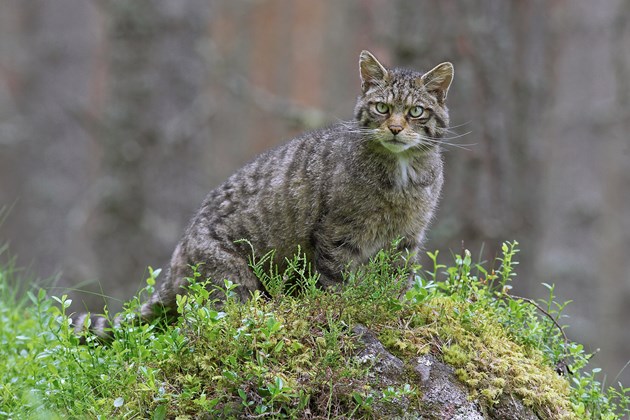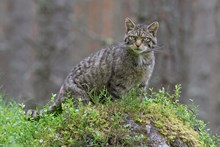18 August, 2017
SWA to work in the five areas which are of most benefit to Scottish wildcat preservation

Scottish Wildcat Action (SWA) has announced that its five-year project to save Scotland’s wildcats is to focus on five key areas, where evidence suggests that at least 19 wildcats are roaming free.
The shift in focus comes after years of extensive survey work across nine areas helped the SWA team narrow its aim to five areas, which will allow for the most effective use of the programme’s limited resources.
Scottish Wildcat Action is a national project supported by the Heritage Lottery Fund, which aims to halt the decline of this native species by 2020. It’s led by Scottish Natural Heritage (SNH) and is a partnership of 20 organisations.
Scottish Wildcat Action Project Manager Roo Campbell, said: “It is disappointing that we did not find evidence of Scottish wildcats in every area we undertook to survey, but we now have a very strongly defined area that we can focus all our attention on.
“Although it shows just how endangered the Scottish wildcat is, it also underlines how important our work is in the other priority areas where we have detected wildcats.”
He added: “We've had tremendous support from local volunteer groups, landowners and farmers, and our 30 volunteers and team members have put thousands of hours of work into this.
“We would like to thank them for their huge effort – due to their hard work, we now have a better chance to make effective use of our resources to better the chances of Scottish wildcats’ survival in the wild.”
The wider-area surveys have helped to build up better biodiversity maps, such as that for Strathavon, where more than 20 other species were detected. This information has been shared with the local ranger service and landowners.
SWA Project Officer Emma Rawling has spent hundreds of hours monitoring the Strathavon area and her band of volunteers have also given up thousands of hours of their own time, as part of the urgent effort to locate those few that remain and to target resources effectively to save them.
Project Officer Emma Rawling said: “We can’t thank everyone enough for their support. Our volunteers, Glenlivet Estate, the local ranger service, gamekeepers and farmers have all provided us with so much support.
“Thankfully, wildlife monitoring in the area is going to continue thanks to the local Glenlivet Wildlife Group, which have received a grant to purchase cameras and will continue to monitor the area and keep us posted.” Emma has offered to train the Glenlivet Wildlife Group members in the use of trail cameras for wildcat monitoring.
She added: “We would love to be proved wrong and if anyone spots a wildcat in the Strathavon area then we would encourage them to get in touch.”
In the five priority areas, SWA have been conducting Trap, Neuter, Vaccinate and Return (TNVR) on feral cats to reduce hybridisation risk; working with land managers to protect wildcats and have launched a successful ‘Supercat’ campaign to encourage pet owners to neuter, vaccinate and microchip their own cats.
For further information about the work of Scottish Wildcat Action or to report a wildcat sighting, visit our website www.scottishwildcataction.org or follow us on our social networking sites such as Facebook, Twitter and Instagram.
Wildlife conservation is an important feature of the 2020 Challenge for Scotland’s Biodiversity.
ENDS
Media queries - contact SWA communications coordinator, Duncan McKenzie, on 01463 725 118 or duncan.mckenzie@scottishwildcataction.org, or the SNH press office on 01463 725 022.
Contact information
- Name
- SNH Media
- snhmedia@snh.gov.uk
NatureScot is Scotland's nature agency. We work to enhance our natural environment in Scotland and inspire everyone to care more about it. Our priority is a nature-rich future for Scotland and an effective response to the climate emergency. For more information, visit our website at www.nature.scot or follow us on X at https://x.com/NatureScot
’S e NatureScot buidheann nàdair na h-Alba. Bidh sinn a’ neartachadh àrainneachd na h-Alba agus a’ brosnachadh dhaoine gu barrachd suim a chur ann an nàdar. Tha e mar phrìomhachas againn gum bi nàdar na h-Alba beairteach agus gun dèilig sinn gu h-èifeachdach le èiginn na gnàth-shìde. Tha an tuilleadh fiosrachaidh aig www.nature.scot no air X aig https://x.com/NatureScot



